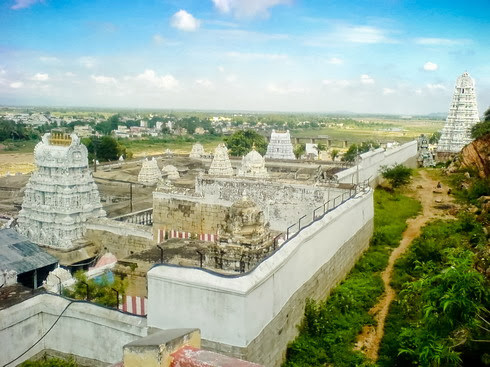The Historic Temple at the Simhachalam, built in the 11th Century, where the Lord Varaha Narasimha Swami's temple is located, resembles the rich cultural heritage Visakhapatnam holds. Located on the Hill top, at a height of 244 mts, popularly called the Hill of the Lion Lord, is the temple of Lord Vishnu in the avatara of Sri Narasimha Swami varu. This great temple built in the 11th century by the King Sri Krishnadevarayam, is one of its kind in the country. Inscriptions on the temple date back to 1098 AD.Millions of devotees from round the world visit this temple every year especially during the Chandanotsavam Festival Season. On the annual ritual Chandanotsavam day, the Lord is covered with a new fresh layer of Sandalwood.History says that Prahlada - a devotee of Lord Vishnu was being tortoured by his father.
Lord Vishnu in the avatara of Lord Nrusimha kills Prahlada's father and saves the child.Dharmapuri Sheshachari wrote the Narasimha Satakam - a collection of poems on the Lord.Reaching Simhachalam One can reach Simhachalam from almost any where in Vizag.
Reaching the Hill Top You can take up the steps path to reach to the Temple. However, if you and also take up a bus. Simhachalam Devasthanam runs Simhadri Bus Service to take you to the hill top from the foothill
Busses will be available for every 10 minutes and ticket costs Rs. 6/- per adult and Rs. 3/- for a child. The fares are nominal and is worth to go on bus if you are not a professional driver since the roads to the hill are narrow and curviest.



